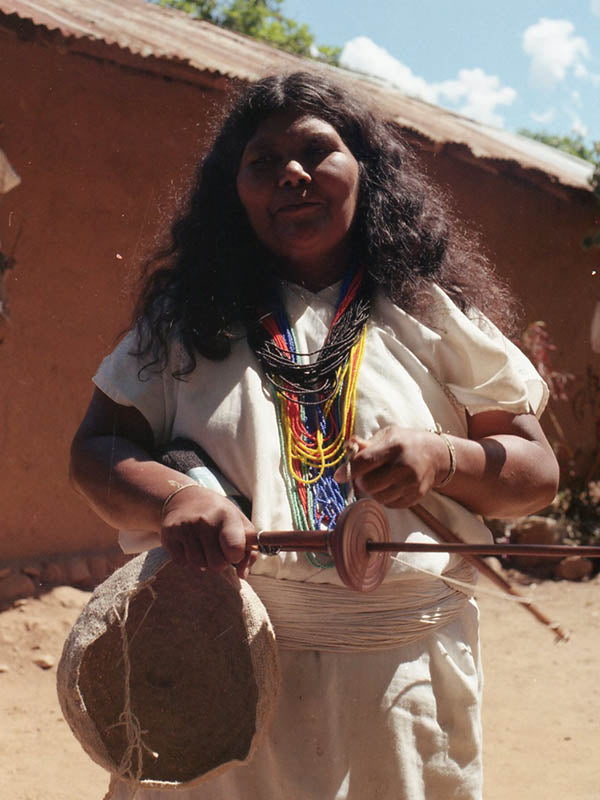
Proceso de co-creación, comunidad Iku y TdS
Un trabajo mancomunado de más de 6 años.
Los Iku, Ikas o comúnmente conocidos como Arhuacos, son una de las cuatro comunidades indígenas, los cuatro guardianes, que habitan “Nivi Umuke” nombre que en lengua propia se le da a la Sierra Nevada de Santa Marta ubicada entre los departamentos del Magdalena, el Cesar y la Guajira (Sudamérica-Colombia).
Este lugar, en forma triangular (a veces en forma de corazón, según los ojos que lo miren) es el sistema montañoso litoral más alto del planeta, se eleva desde el mar caribe hasta alcanzar picos nevados de más de 5,000 metros de altura. Estas condiciones hacen que se pueda decir que Nivi Umuke es una replica en escala de la tierra, y así lo considera el pueblo Iku, que cuida su hogar como si de este dependiera el bienestar del planeta entero.
El oficio de tejer es la base primordial de su cultura, donde se considera la vida misma como un tejido él cual uno mismo, junto a la comunidad, va creando e hilando. “En el mundo nada está suelto, todo está entre tejido, todos unidos conformamos el mundo” dice Oliverio Villafañe, Iku con el que trabajamos hace más de 6 años.
En el tejido, específicamente en la tutu (“mochila” en lengua Iku) la cosmogonía de su cultura es plasmada, cada figura tejida en una tutu representa algo, nada se teje en vano, al igual que en la vida. La tutu representa también el útero femenino que lo contiene todo, al universo mismo, que se origina con la primera puntada y se expande a medida que el tejido va creciendo en forma de espiral.




Cada puntada, cada vuelta, cada figura, lleva un significado profundo, convirtiendo su dibujo en la expresión escrita de la cosmovisión de la cultura Iku (que originariamente se basaba en la rica tradición oral). Cada símbolo tejido se convierte en un mensaje no solo visual, sino también vibratorio, que convoca al equilibrio.
El poder creador de cada tejedora también es un elemento fundamental en el oficio de tejer tutus, ya que cada figura tejida, el uso del color, la elección de los patrones y sus combinaciones son fruto de la creatividad y el pensamiento de cada mujer, donde los dibujos representan una idea que se va repitiendo una y otra vez para conservar la tradición, es algo así como un mantra gráfico, en su sentido repetitivo, que permite una conexión con el mundo espiritual y ritual.

Los colores usados tradicionalmente en las tutus son el blanco, el negro, el café y el gris provenientes de los colores naturales de la lana de ovejas que ellos mismos cuidan en su territorio, la elección en cuanto a la combinación y el uso de estos colores solo depende de la creatividad de cada mujer.






Podríamos afirmar entonces que definitivamente una tutu no es simplemente una artesanía, es más bien una pieza viva, que habla sobre la cultura Iku, que le da sentido a sus vidas y hace parte del equilibrio armónico entre el ser humano, la naturaleza y la conexión con lo divino.Con este articulo quisimos contarles un poco sobre la historia detrás de los tejidos Iku y su valor simbólico, además rendirle un homenaje a todas las gwatis (“mujeres” en lengua Iku) que tejen piezas que luego se convertirán en Tigres de Salón.